Mechanical keyboards come in all shapes and sizes, but what really changes the way they feel is the type of switch underneath each key. Among all the options available, blue mechanical switches are some of the most talked-about. Known for their loud click and a noticeable bump when pressed, they offer a very different experience from the smooth glide of red or the quiet press of brown switches.
But are they actually good for gaming—or just better suited for typing? To figure that out, it helps to understand how blue switches work, how they compare with others, and where they shine (or fall short) depending on how you use them.
What Are Blue Mechanical Switches?
When people talk about mechanical keyboards with blue switches, they’re usually referring to switches that produce a tactile bump along with an audible click. You feel it, you hear it, and you know exactly when the key registers. That’s what makes them satisfying for typing—there’s a sense of control and rhythm to each keystroke.
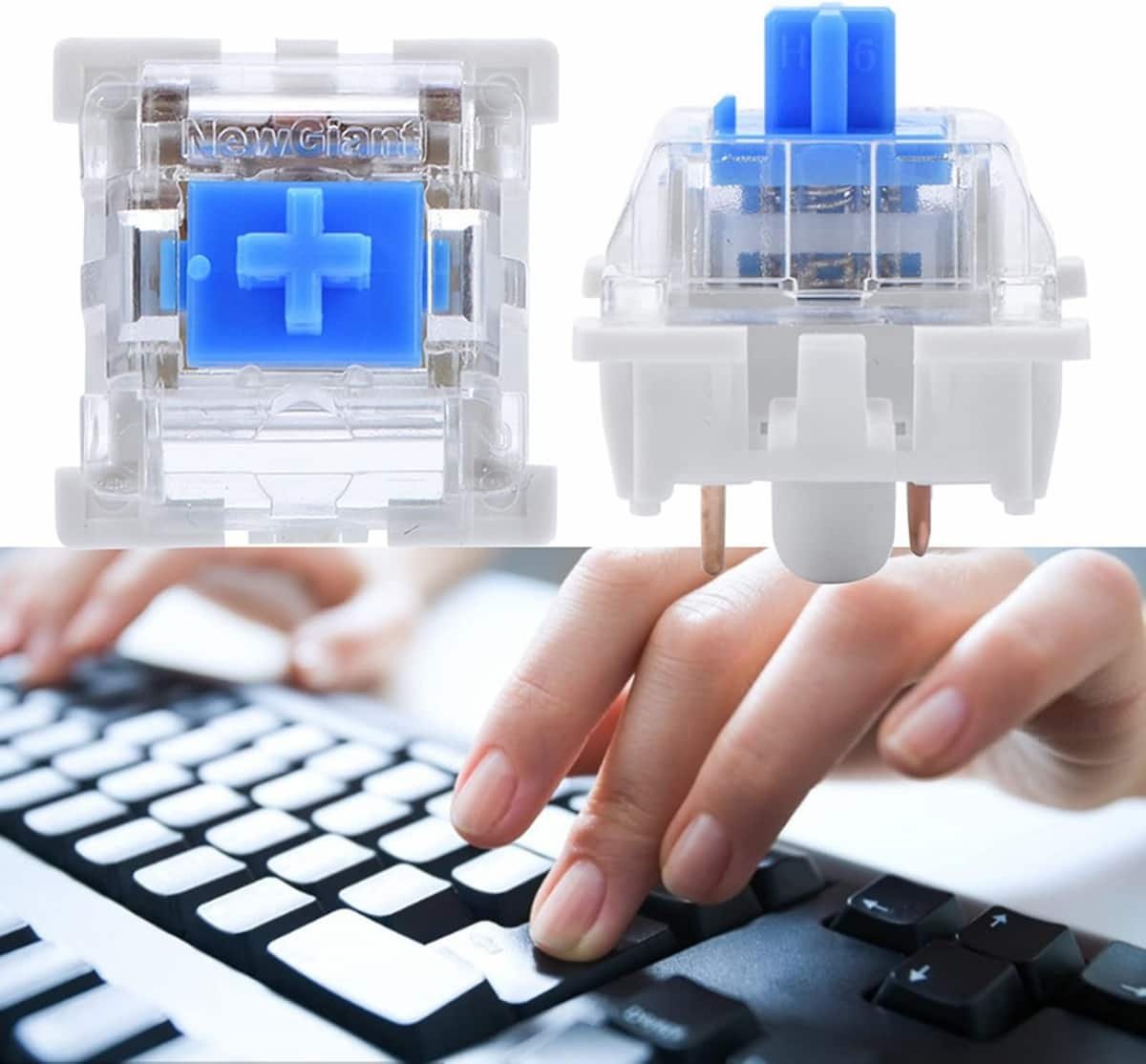
These switches are part of a larger group of mechanical switches, each with its own feel. Reds are smooth and quiet. Browns are tactile but more subtle. Mechanical blue switches, on the other hand, are bold. You press a key, and the keyboard talks back.
This type of feedback makes it easier to stop pressing once you’ve hit the actuation point, which some users say helps improve typing accuracy. For others, though, it’s the sound they love most. That sharp click becomes part of the experience.
How Blue Switches Feel in Use
Typing on a keyboard with blue mechanical switches feels different right away. There’s resistance before the key registers, and then a noticeable bump and sound as you pass that point. That feedback is what makes them stand out—especially compared to something like a membrane keyboard or a mechanical keyboard with red switches, where the actuation can feel nearly invisible.
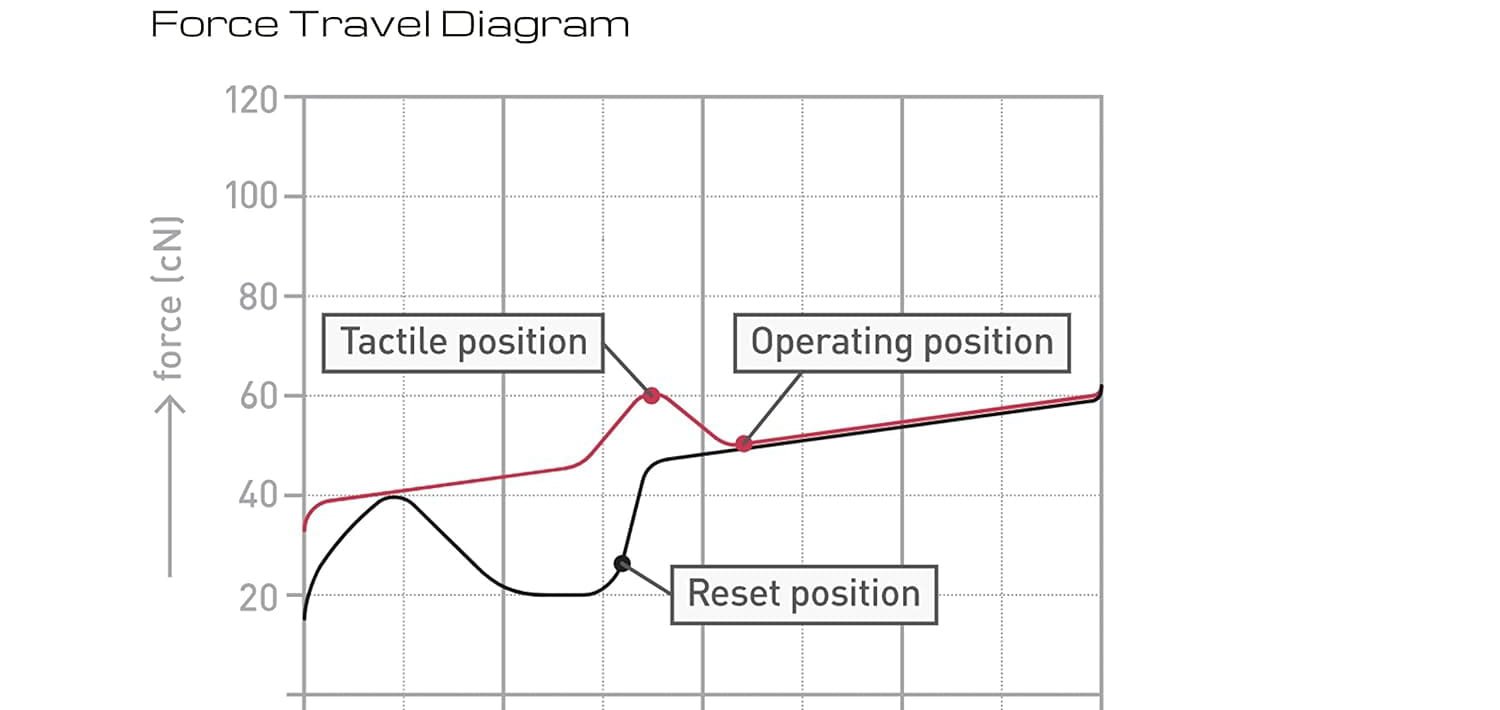
This tactile response is why many writers, programmers, and office workers choose blue switches. You don’t need to bottom out the key to know you’ve typed something. Your fingers naturally learn where the activation happens. It’s efficient, and over time, it can even feel faster—even if the key travel is technically slower than some other switch types.
Are Blue Switches Good for Gaming?
Here’s where opinions start to differ.
If you’re playing a fast-paced shooter, speed and responsiveness are everything. And in those moments, the extra movement and click of a blue switch might actually slow you down. Since the switch needs to reset after every press, double-tapping keys quickly—like dodging or firing—can be slightly more difficult than with a linear switch.
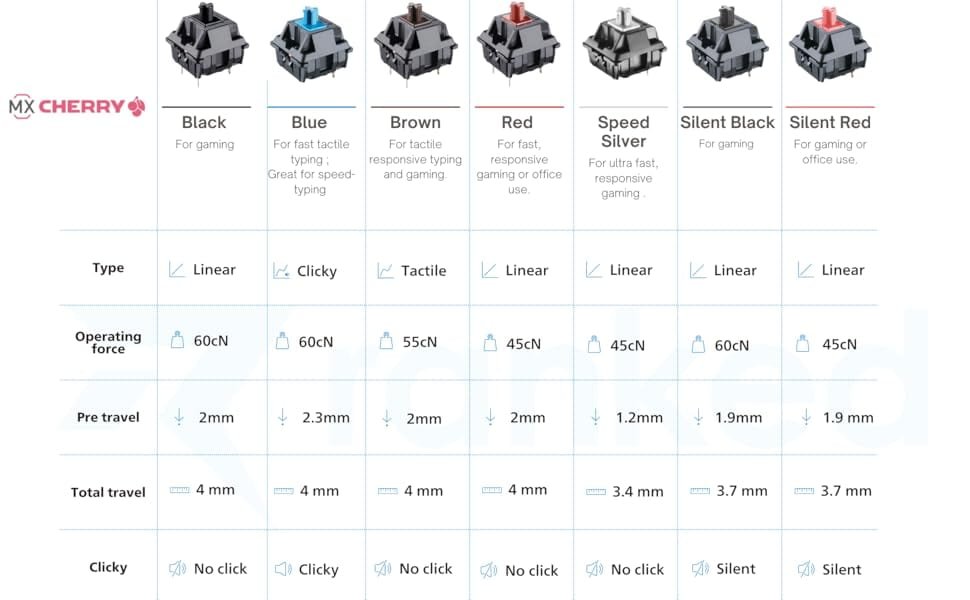
That’s why competitive gamers often lean toward red switches or optical switches. But that doesn’t mean blue switches are a bad choice for gaming overall. In fact, for strategy games, RPGs, or titles that don’t require lightning-fast reactions, the blue switches mechanical keyboard layout can feel excellent. Each press feels deliberate, which can help avoid accidental inputs.
If you’re someone who games and types a lot, blue switches can offer a nice balance.
Comparing Red vs Blue Mechanical Switches
One of the most common comparisons is red vs blue mechanical switches. Reds are linear. They go down without resistance, making them fast and smooth. They’re also quieter, which makes them great for shared spaces.

Blue switches, on the other hand, are more tactile and give stronger feedback. That’s great for typing—but less ideal if you’re gaming late at night and don’t want to wake anyone up. It also means more finger movement and effort, which could cause fatigue in long sessions.
So which one is better? It depends. If speed is your priority, red might win. But if you’re after feedback and precision, mechanical keyboard switches blue vs red becomes a much more balanced debate.
Real-World Keyboards with Blue Switches
Many popular gaming keyboards use blue switches. Models like the Redragon K585 Diti one-handed RGB mechanical gaming keyboard with blue switches are built for gamers who want that clicky feedback. Others, like the AUKEY KMG12 mechanical keyboard blue switches 104-key with gaming software, provide a full-size layout with extra customization options.
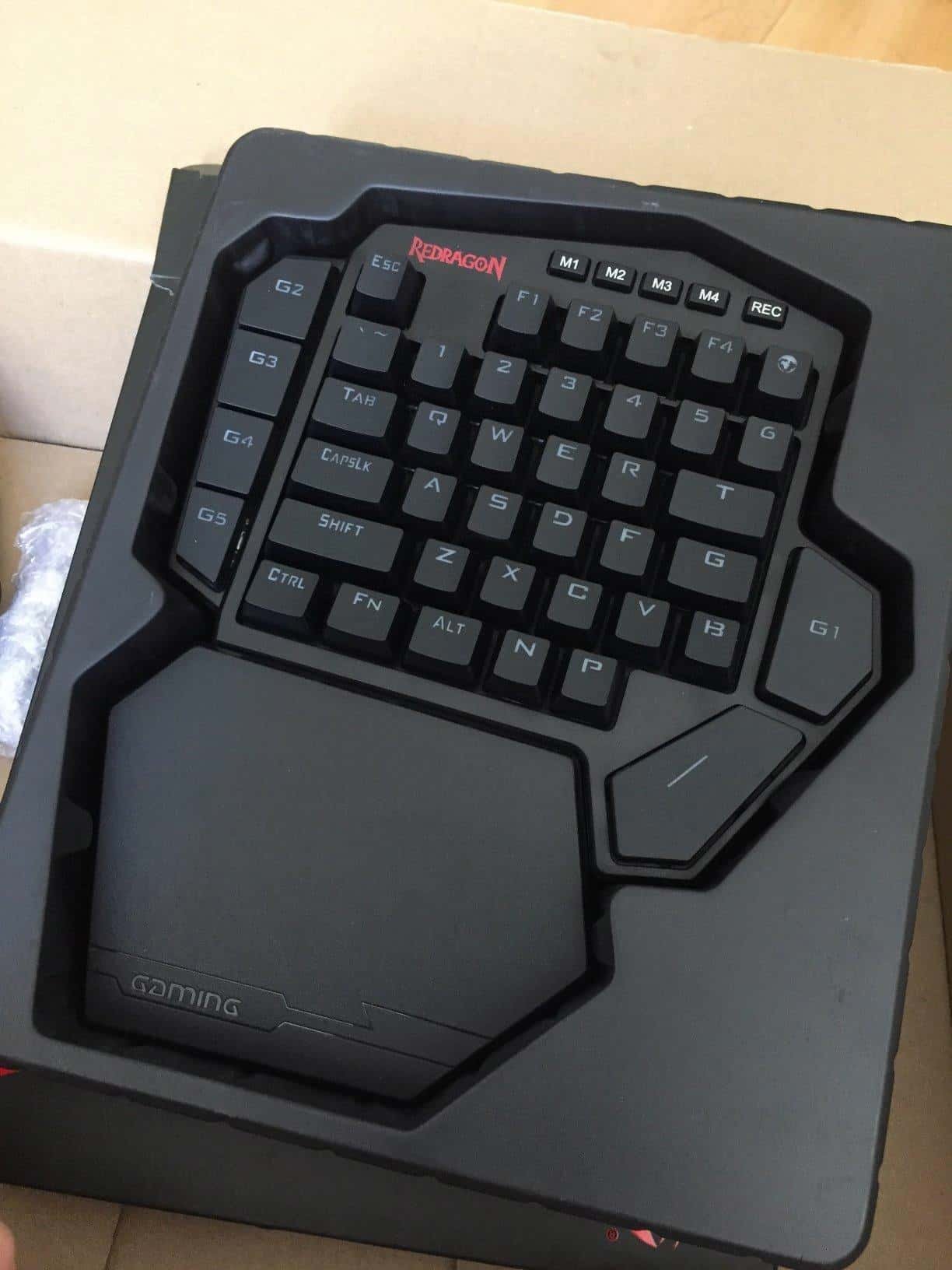
There are also enthusiast models, like the MechanicalEagle Z-77 multicolor backlit 87-key mechanical gaming keyboard with blue switches, which focus on simplicity and build quality. High-end picks like the Logitech G710 mechanical gaming keyboard with Cherry MX Blue switches and Rosewill RK-9000V2 give a premium feel with well-known Cherry MX Blue switches inside.
Whether you’re looking at gateron mechanical blue switches, GX blue mechanical switches, or even SteelSeries mechanical keyboards with blue switches, the key difference is in how each brand tunes that click and tactile bump. Some feel sharper, others more muted—but the idea is always the same: feedback you can feel and hear.
How It Feels After Hours of Use
One of the first things you notice when spending hours on a blue switches mechanical keyboard is how much feedback your fingers get. At first, it’s satisfying. Every click feels like confirmation. But as time goes on, the resistance and sound can begin to wear on you—especially if you’re not used to it.
It’s not about discomfort, necessarily. It’s more that you become aware of every keypress. Typing a paragraph? Feels great. Writing a ten-page report or spending all evening grinding through a game? That same feedback can start to feel heavy. Some users say that the extra resistance keeps them focused. Others admit, “It’s like drumming on a desk after a while.”
And that’s exactly where the difference lies. If you enjoy that mechanical clack and that tactile pause before each key registers, you’ll likely love using mechanical keyboards with blue switches. If not, well—brown or red might be the escape route.
The Click That Divides People
There’s no getting around it. Blue mechanical keyboard switches are loud. That clicky sound, which some people find rewarding, can be deeply irritating to others. If you’re sharing a room, working in an office, or even just gaming while someone’s asleep nearby, the sound might be too much.
As one user put it: “It’s not just a sound—it’s a personality. Either you love it, or you live with headphones on.”
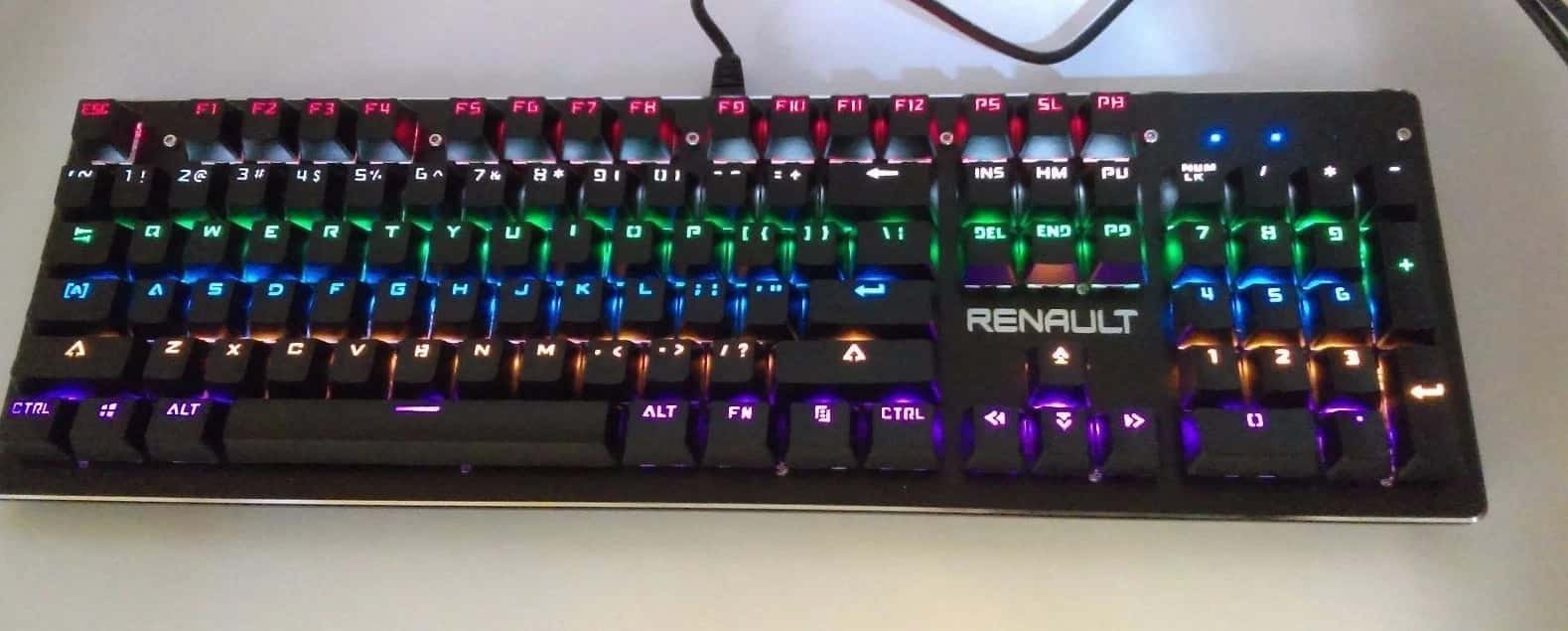
And while brands have made small changes to dampen the noise, the core design hasn’t changed much. Whether you’re using a Logitech mechanical keyboard with blue switches, a Rosewill RK-9000V2, or a more niche pick like the Hhusali LED backlit 104-key gaming keyboard, the experience is going to be the same: clicky, bold, and very present.
Anatomy and Why It Matters
What makes the switch feel this way comes down to its inner parts. A blue switch uses a special mechanism with a click jacket and a tactile bump built into the stem. That’s what produces the sound and feel. Unlike linear switches that just slide, these have a little “catch” in the middle. Once you pass it, the key actuates.
It’s this design that gives you the “I pressed it” moment that many people appreciate. But it also means that the key takes a tiny bit longer to come back up, which can slow you down in fast-paced games. This isn’t a flaw—it’s a design choice. Blue switches were made for deliberate presses, not rapid-fire movement.
So while you’ll feel more connected to each keystroke, there’s a reason many pro gamers lean toward switches with less resistance and a shorter reset.
Gaming with Blue Switches: Where They Shine, and Where They Don’t
You can absolutely game with blue switches. And many people do. In slower-paced genres—strategy, simulation, RPGs—they feel responsive and intentional. There’s a certain rhythm to moving your character or navigating menus with that click under your fingers.
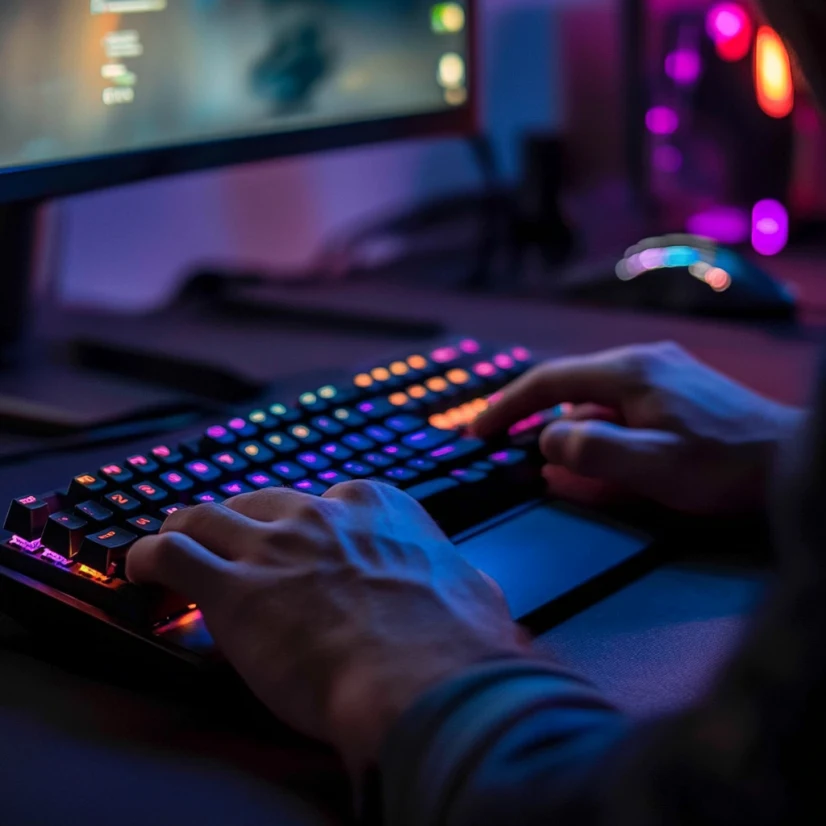
But if you’re playing a twitch shooter or a fighting game where input speed matters, the delay between presses can become noticeable. Double-tapping a movement key, for instance, takes just a fraction longer because the key needs to reset.
And in those moments, you start to understand why gaming keyboards with red switches have become the standard in the eSports world.
Still, it’s worth noting that some gamers want that extra feedback. One user described it perfectly: “The sound tells me I hit the key. The bump tells me I meant it.”
Longevity and Reliability
If you’re buying a mechanical keyboard with Cherry MX Blue switches, or even something like the Gateron mechanical blue switches, one thing you’ll almost always get is long-term durability. These switches are built to last tens of millions of keystrokes. They don’t wear out fast. And with a little cleaning now and then, they’ll feel consistent for years.

That reliability is a big part of why people invest in mechanical keyboards in the first place. Whether you go for a compact board like the GK61 mechanical keyboard blue switches, or a larger model like the Logitech G513 with GX Blue switches, you’re getting something made to be used heavily.
And that also means they’re a solid investment for people who write, program, or play daily.
So, Who Are Blue Switches Really For?
If your day includes a lot of typing—and you enjoy physical feedback—you’ll likely appreciate blue switches. The sound can be motivating. The feel can be comforting. There’s a kind of certainty that comes with using them, like every keystroke means something.
But if your day includes competitive gaming, shared workspaces, or quiet environments, it might not be the smoothest fit. There are always alternatives like brown switches (still tactile, less noisy) or red switches (quiet and fast) that balance better for those needs.
Still, plenty of people use blue switches for both work and play, and wouldn’t trade them for anything else.
Final Thoughts
So—are blue mechanical switches good?
Yes. But not for everyone.
They’re not the fastest. They’re definitely not the quietest. But they offer something that’s hard to describe until you’ve used them: a connection to the keyboard that feels real. For writers, programmers, and gamers who enjoy the sound and feel of each keystroke, a mechanical keyboard with blue switches delivers a unique kind of satisfaction.
If you’re unsure, try one out before committing. Or consider a hot-swappable board where you can change switches easily—something like the Sades K10 LED backlit keyboard or the TT eSports Poseidon Z. That way, you can see if the click is for you—before your whole desk starts echoing with it.